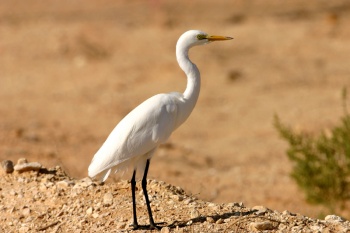(alt tax) |
m (→Taxonomy) |
||
| Line 44: | Line 44: | ||
Which genus this bird belongs to was for a long time not clear, it was placed in ''[[:Category:Egretta|Egretta]]'' or in ''[[:Category:Mesophoyx|Mesophoyx]]'', However, most authorities now agree on ''[[:Category:Ardea|Ardea]]''. | Which genus this bird belongs to was for a long time not clear, it was placed in ''[[:Category:Egretta|Egretta]]'' or in ''[[:Category:Mesophoyx|Mesophoyx]]'', However, most authorities now agree on ''[[:Category:Ardea|Ardea]]''. | ||
| − | The Handbook of the Birds of the World Alive now recognizes the three subspecies as full species: "Yellow-billed Egret", ''A. brachyrhyncha'' (''brachyrhyncha''), "Intermediate Egret", ''A. intermedia'' (''intermedia'') and "Plumed Egret", ''A. plumifera'' (''plumifera''). | + | The Handbook of the Birds of the World Alive now recognizes the three subspecies as full species: "Yellow-billed Egret", ''A. brachyrhyncha'' (ssp. ''brachyrhyncha''), "Intermediate Egret", ''A. intermedia'' (ssp. ''intermedia'') and "Plumed Egret", ''A. plumifera'' (ssp. ''plumifera''). |
====Subspecies==== | ====Subspecies==== | ||
Clements recognises the following subspecies [[#References|[1]]]: | Clements recognises the following subspecies [[#References|[1]]]: | ||
| Line 50: | Line 50: | ||
*''A. i. plumifera'': "'''Plumed Egret'''". [[New Guinea]], eastern [[Indonesia]] and [[Australia]] | *''A. i. plumifera'': "'''Plumed Egret'''". [[New Guinea]], eastern [[Indonesia]] and [[Australia]] | ||
*''A. i. brachyrhyncha'': "'''Yellow-billed Egret'''". Africa south of the Sahara | *''A. i. brachyrhyncha'': "'''Yellow-billed Egret'''". Africa south of the Sahara | ||
| + | |||
==Habitat== | ==Habitat== | ||
Freshwaters, including slow-flowing rivers, lakes and swamps, also coastal mudflats and mangroves, sometimes grassland. | Freshwaters, including slow-flowing rivers, lakes and swamps, also coastal mudflats and mangroves, sometimes grassland. | ||
Revision as of 15:45, 28 August 2023
Alternative Name(s): Yellow-billed Egret, Median Egret
Includes: Yellow-billed Egret, Plumed Egret
- Ardea intermedia
Mesophoyx intermedia
Egretta intermedia
Identification
56–72 cm (22-28 in). Medium-sized white egret.
- all white
- bill relatively short (medium), robust
- gape does not extend beyond eye
- neck generally without pronounced kink (or reduced compared with Great Egret)
- head rounded
Nonbreeding:
- bill yellow (sometimes reddish)
- legs black below 'knee': yellow, grey or reddish above
- Possibly wisps of fine breast plumes
Breeding
- Long filmy, erectile plumes on back and breast
- Red bill and legs for a short time
- Pea-green facial skin
Similar Species
Most similar to Great Egret, especially in parts of south-east asia. Intermediate differs as follow:
- smaller, daintier, more graceful extended head and neck about equal to body length
- head is rounder
- bill shorter and deeper. The shorter bill also gives Intermediate's head a more triangular look than the attenuated snake-like head of Great Egret.
- line of gape extends to just below eye (Great Egret's extends well past it)
- feathered chin of Intermediate extends farther forward along the gonys-spot
Distribution
A widespread Old World species.
Found throughout much of sub-Saharan Africa from Senegal to Sudan and south to South Africa but absent from the most arid and densely forested areas.
Also occurs over much of the Indian subcontinent, east to southern China, southern Korea and southern Japan and south to the Philippines. western Borneo, Sumatra and Java. Further east occurs in southern New Guinea and in Australia mainly in the north and east.
Northern Asian birds are migratory, those from Africa merely dispersive.
Recorded as a scarce spring and summer visitor to the Banc D'Arguin in Mauritania, and a vagrant to the Cape Verde Islands, Egypt and at the Dead Sea in Jordan.
In May 2001 the first Intermediate Egret for Europe was recorded in a small wetland close to Rome, Italy, and remained there until August. In Asia vagrants have been recorded north to Sakhalin.
Australian birds may undergo migratory movements and may occur only in New Guinea in winter.
On May 31st, 2006 a dead Intermediate Egret was found on Buldir Island in Alaska's Aleutian Island chain. It constituted the first record for North America.
Taxonomy
Which genus this bird belongs to was for a long time not clear, it was placed in Egretta or in Mesophoyx, However, most authorities now agree on Ardea.
The Handbook of the Birds of the World Alive now recognizes the three subspecies as full species: "Yellow-billed Egret", A. brachyrhyncha (ssp. brachyrhyncha), "Intermediate Egret", A. intermedia (ssp. intermedia) and "Plumed Egret", A. plumifera (ssp. plumifera).
Subspecies
Clements recognises the following subspecies [1]:
- A. i. intermedia: "Intermediate Egret". Japan to southern India and Greater Sundas
- A. i. plumifera: "Plumed Egret". New Guinea, eastern Indonesia and Australia
- A. i. brachyrhyncha: "Yellow-billed Egret". Africa south of the Sahara
Habitat
Freshwaters, including slow-flowing rivers, lakes and swamps, also coastal mudflats and mangroves, sometimes grassland.
Behaviour
Breeding
Breeds in colonies, often with other species of herons/egrets.
Diet
Their diet consists of smaller fish, eels, frogs, snakes and insects.
References
- Clements, J. F., T. S. Schulenberg, M. J. Iliff, D. Roberson, T. A. Fredericks, B. L. Sullivan, and C. L. Wood. 2018. The eBird/Clements checklist of birds of the world: v2018. Downloaded from http://www.birds.cornell.edu/clementschecklist/download/
- Handbook of the Birds of the World Alive (retrieved July 2015)
- BF Member observations
Recommended Citation
- BirdForum Opus contributors. (2024) Medium Egret. In: BirdForum, the forum for wild birds and birding. Retrieved 23 May 2024 from https://www.birdforum.net/opus/Medium_Egret
External Links
GSearch checked for 2020 platform.






